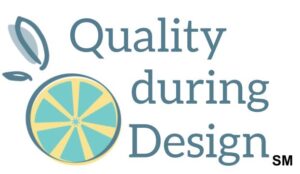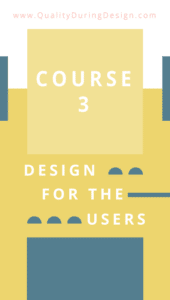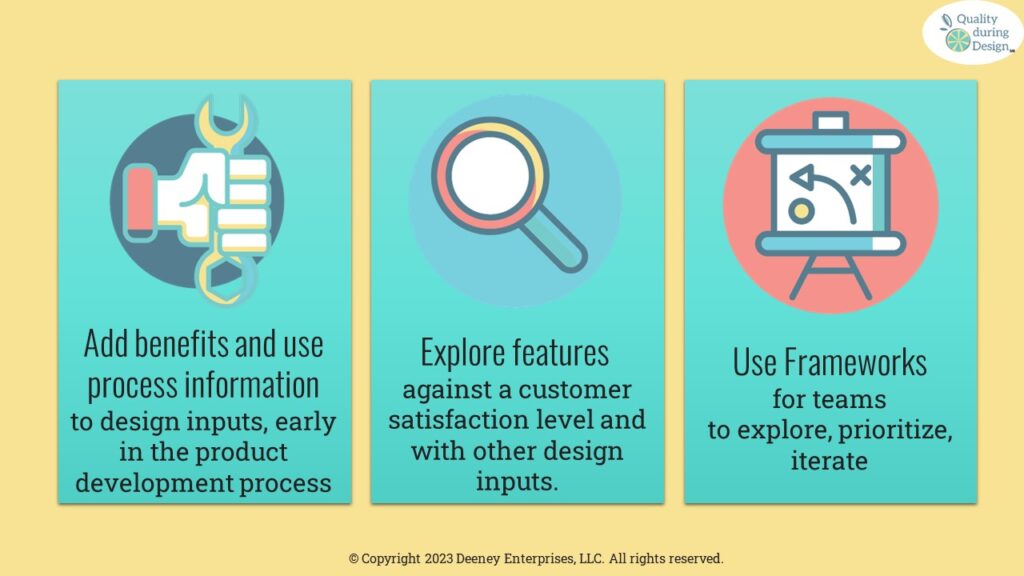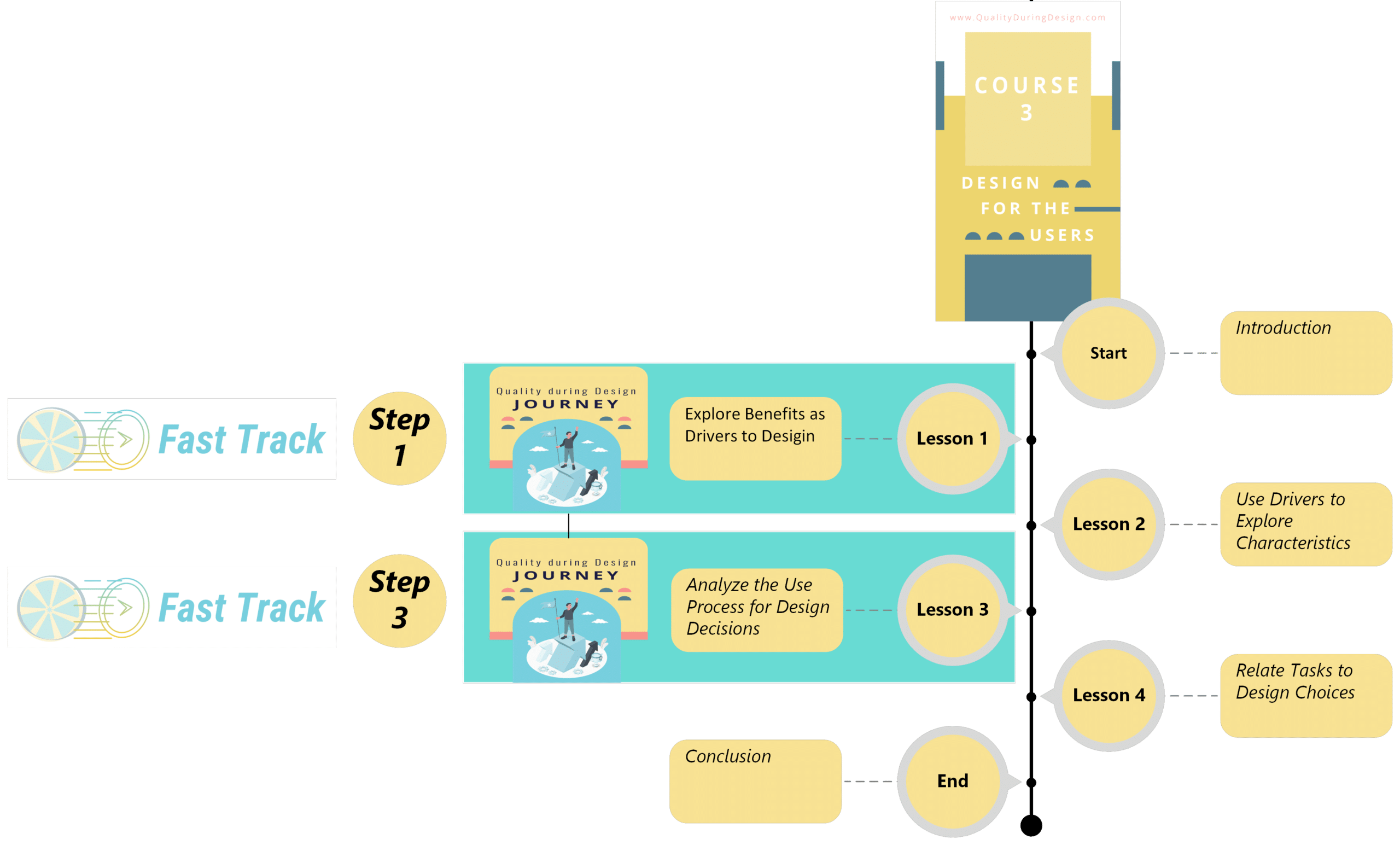About Course 3: Design for the Users
Welcome to Course 3 of the QDD Journey, [accessally_user_firstname]!
Course 3 is titled "Design for the Users".
You'll be learning about ways to think about and develop design concepts with your team based on the users: their wants and how they'll use your product.
Let's set up for success! This ABOUT page shows you what we'll be covering. It also shows you how to navigate course material and where to access information related to the course.
What you'll learn
Learning objectives
The learning objectives are integrated throughout this course using the materials within this online portal and the practice problems.
Download and view the course syllabus and the tables that relate learning objectives and course activities. You'll gain an understanding of the Course 3 Journey and how to get the most out of this course.
Additionally, all of the upcoming lessons and their recommended week to consume are listed and linked at the bottom of this page for your information and as another navigation option.
Learner Prerequisites
This course is created for learners involved in product design development. An engineering degree or background is useful but is not a prerequisite to this course.
Topics
We'll be covering topics in these areas: concept development and design inputs, including requirements.
There are 3 main areas of design engineering where we'll be applying these topics:
- adjust design activities to add benefits and information about the use process early in the product development process
- explore potential features against a customer satisfaction level and with other design inputs for decisions about the product
- use frameworks for (you and your) teams to explore, prioritize, and iterate on the product design.
Course 3
Design for the Users
Objectives
Upcoming Course Modules and Lessons
Recommended Pace over 2 weeks
Module 1: From Benefits to Design Inputs
Week 1

Lesson 1: Explore Benefits as Drivers to Design
In early concept development, we don't have a list of features to engineer or look at. We do have an understanding of what we're trying to accomplish with this product.
We can use the Concept Space to better understand the benefits of our product. We have intended outputs of our product, but what does that mean to our users? What outcome are they expecting? And what kind of an impact would that make to them?
We break out benefits into outcomes and impacts. This exercise helps divide out our thinking processes and stay focused on what it is we want to learn. Breaking-them down into their parts starts to help us and our team really get into some interesting things that can help form our design inputs for great designs.
Lesson 2: Use Drivers to Explore Characteristics
How do we take the ideas we've been exploring with our team about the concept space and move it more toward design inputs?
We highlight how the drivers to benefits are the beginnings of design inputs.
We can further explore the drivers that aren't quite to the level that we want to design against. A tree diagram is a simple graphical tool that can help us get to that point with our team.
Then, we can use a combination of 2 matrices to compare the characteristics we've been developing against themselves and the benefits. Are we really developing the right characteristics? Which ones are the most important for quality, reliability, and cost?
Module 2: From Use Process to Design Inputs
Week 2

Lesson 3: Analyze the Use Process for Design Decisions
The way our customers actually use our product is the Use Process of our design. They follow steps to accomplish tasks. Which is why we can borrow common tools from manufacturing and business processes to evaluate the Use Process of our product for design inputs.
This team activity may surprise you. There is a lot we can start to understand about our concept ideas just by looking at high-level functions as a process step. Plus, there are many ways we can dig into the flowchart to derive design inputs, depending on what it is we want to learn.
Lesson 4: Relate Tasks to Design Choices
Our design is going to have a user interface of some sort. This lesson explores use errors, their causes (from psychology), and an analysis to be able to design out errors and design-in controls.




